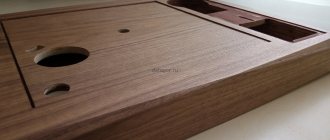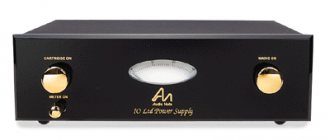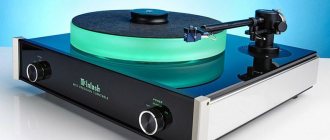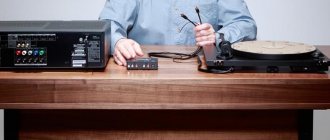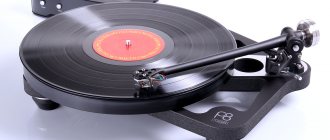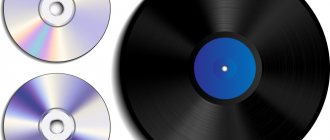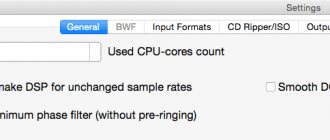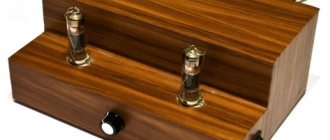In the world of music, streaming rules the roost these days. Labels, artists and retailers mourn CDs while records continue their comeback. The fact is that vinyl, which seemed to “die” 40 years ago, has now again become the main physical music format. This has led to an increase in demand for turntables and cartridges, which are needed to "extract" music from the grooves of records.
The turntable is an obvious and understandable thing in itself. To spin a record, you need a disk spinning at 33.3 revolutions per minute with minimal vibration. As for the cartridge, everything is not so simple, and the cost of the head can sometimes seem absurd. Especially for the average person, not an audiophile. However, the cartridge, like other components of the audio system, can greatly affect the sound of the record.
How do phono cartridges work?
Let's figure out what a phono cartridge is and how it works. The LP player cartridge belongs to a category of devices called "converters". It converts one type of energy into another.
You are definitely familiar with such converters, because we all use speakers and headphones - the most common converters in the world of sound. They convert electrical energy (from the amplifier) into sound waves. Cartridges work on the opposite principle: by jumping along a groove, they convert the movements of the stylus (needle) into electrical impulses.
The most popular cartridges are moving magnet (MM) cartridges, but moving coil (MC) cartridges are also popular. These two types of heads can be considered as mirror opposites. Both technologies have their adherents, advantages and disadvantages.
Vinyl player for beginners: cartridges and shells
You have bought a vinyl player or are close to such a decision and have probably noticed that quite a lot of offers look like the picture below:
In these examples it is clearly visible that the player does not have enough signal. Those. They sell the device without a shell and, accordingly, without a cartridge. But let's start in order.
What is it?
Shel is a cartridge holder, a certain structure to which the cartridge is screwed.
It looks something like this:
Here it is lying with the cartridge already screwed to it.
The shell is ultimately installed on the tonearm - such a long straight or S-shaped stick using a special convenient mount located on the tonearm.
See examples of tonearms in the picture with and without headsets already installed:
These are S-shaped tonearms, and these are straight:
Now they like to talk all sorts of bullshit about the fact that the best turntable is with a direct tonearm, and even with a bezel on the drive, but just know that turntables with direct drive (Direct Drive, DD) and with an S-shaped tonearm, which provides the best, have always been valued moving the needle over the entire surface of the disc from start to finish. If this is not the case, and the turntable has a direct tonearm, then it should not be simple, but with servo motors and a minicomputer that will accurately check the movement of the needle - a good example is the decent inexpensive Victor QL-Y44F machine
Here the straight tonearm is compensated by a microcomputer and servos in the tonearm.
Another example of a servo drive on a Denon DP-37F turntable:
More expensive models have an even more sophisticated system:
You see how massive the servo drive unit on the tonearm has become (inside they look like coiled circles of wire)
Another option to achieve the same thing is an S-shaped tonearm:
As you can see, a primitive counterweight made of a weight and an S-shaped tonearm, coupled with a massive, unshakable base and a heavy disk, are capable of providing decent playback.
The most affordable classic for many years is definitely the Techncis SL-1200
Although it looks plastic, it really is plastic. as they say, it is made of a composite material, but this plastic is more like stone in reality - the device is very heavy - 12 kilograms.
But it is also very simple, not fully automatic, for me, as a user, this is not a plus at all, but an inconvenience, since vinyl is generally not a very comfortable type of listening - you need to constantly be distracted from this pleasant activity by running and turning records every 15-20 minutes and wiping them from dust. It's less like listening and more like cleaning.
There are many purists who are content with a straight stick and a wretched weight on it + rubbing their ears in about a Kevlar tonearm, but once you try a real, normal Japanese turntable, all this PR nonsense will be shattered into reality.
But let's return to the shells. As you can see, there are many shells and they seem to be similar in appearance, but somehow they are not.
Although there are long grooves in the headset that allow you to place and secure the cartridge in different horizontal positions (closer to the tonearm or further), there are turntables that tried to jump out of their pants at the time of their creation and are equipped with non-standard not only headsets, but also fastenings for these shelov. One such example is the headsets for the Denon DP-37F or Denon DP-45F turntable.
Do you see how short it was? If you are offered such a turntable without a shell, then finding a special shell for it will be quite problematic. The third-party one does not fit the mounts, and in addition, the cartridge itself will be further away than necessary and will not fit properly into the tracks.
In my photo, the long-distance one with the Audio Technica AT-91 cartridge will not fit the Denon DP-54F turntable, but for the near-native one, it is quite possible to twist the cartridge from an incompatible head.
Those. It follows from this that there are different heads and when choosing a turntable without a head, you need to know what kind of head it has. Fortunately, many head turntables are more or less standardized (but not all).
So there was a turntable, but many on foreign sites offer turntables without a cartridge.
What is a cartridge?
A cartridge, or cartridge head, is a device that converts mechanical energy (friction of the stylus on a vinyl disc) into electrical energy (sound).
Cartridges inside come with a moving magnet (MM, the most popular and cheapest) and with a moving coil (MC).
Here is an excerpt from the website audiomania.ru:
“The MM-type pickup (cartridge) produces a signal of significantly greater amplitude than the MC head. But due to the fact that the needle in it is mechanically connected to a heavier magnet, the MM has worse dynamic and frequency characteristics.
Based on their operating principle, pickups are divided into moving magnet (MM) and moving coil (MC) cartridges. Accordingly, in the first case, the needle is connected to a magnet that moves inside the inductor coil, and in the second case, to a coil that moves in the field of a permanent magnet.”
MC cartridges are more expensive and require a complex phono stage. I will give a similar feature of their work from the definition of the site audiomania.ru:
“MC heads are much more difficult to manufacture. In addition, MM pickups are usually equipped with a replaceable stylus, which significantly reduces the cost of their maintenance, while the stylus in MC-type pickups cannot be replaced independently due to its design.”
In any case, if you decide to choose a high-class MC cartridge (and cheap MCs are unlikely to outperform good MM-type cartridges), then you should be concerned with the fact that your amplifier must have a phono preamplifier that supports MC-type cartridges (MM type is widely supported as standard, although many popular amplifiers such as the Pioneer A-717 support this type of cartridge). Another option is to buy an external phono preamplifier with a known better quality.
Most likely your choice will be in the field of MM-type cartridges. There are quite a lot of such cartridges - they are produced or produced by many companies. Those. If you bought a vintage turntable secondhand, this does not mean that you need to look for the old cartridge, especially since there may be a stiff cantilever shock absorber there.
What is a cantilever - in simple terms - it is a metal rod to which the tip of a needle is welded. The tip of the needle can be metal or diamond. Diamond is of course more durable. the tip of the needle can also be in the form of a cone (the worst), oval or spherical (the best options).
Cantilever under a microscope
As I understand it, it will be a little unclear for you, so I’ll give some visual pictures:
Cheap modern Audio-techinca AT-91 cartridges are quite popular
At a price of about 2000 rubles, they successfully replace and sound no worse than the well-known Soviet GZM cartridges.
More expensive cartridges give better sound, since the better the magnet in such a cartridge works, the more varied the nuances of the sound you get:
Audio Technics AT150 cartridge
Audio Technics AT450 cartridge
Grado cartridges
Ortofon cartridges
This is what MS cartridges look like if the developer wishes:
Well, the meaning seems clear.
As already noted, needles can be changed for MM cartridges. This is important, since the needle wears out very quickly, and literally in six months you will notice a deterioration in the sound, there will be fewer high frequencies, the sound will be dirtier and louder - the reason for this is a worn-out needle. You will need to replace the needle. The easiest way to do this is to buy an insert specifically for your cartridge. This insert with a needle is simply put on the cartridge. It looks like this:
The insert itself can also be covered either with a removable protective cap or with a sliding one.
I think it's clear that each cartridge needs its own unique needle insert. Some inserts fit different cartridges.
So, you have a shell, you have a cartridge with an insert, you need to attach it to the shell.
This is done like this:
Before attaching the cartridge to the headset, you must first connect the 4 wires correctly. They connect, at least in the models I had, as follows:
That is, if you look at the cartridge from above and hold it so that the needle is as far away from you as possible, then
top right - blue
top left - green
Bottom right - white
Bottom left is the red wire.
Try to secure as well as possible - contact in this area is important. Or, for example, you bought a turntable with a cartridge, and the sound is acting up - it is very possible that there is a bad contact in this area - disconnect, wipe the contacts with alcohol or contact maple and connect back. If the cartridge is working properly, then the problems will disappear.
When you have connected the wiring, you need to secure the cartridge to the headset. Typically, there should be a distance of 5 cm from the tonearm to the tip of the needle.
Measure 5 cm with a ruler and tighten the bolts. If you don't have these bolts and nuts, then you're in a bit of trouble. Since these are not simple bolts, but made of non-magnetic materials, so that they do not interfere with the operation of the electromagnet inside the cartridge. You need to look for non-magnetic bolts and nuts. They are sold at foreign auctions, but also look at household goods, there are such fastening strips for electrical wiring, they may have non-magnetic bolts and nuts. It's easy to check - if you hold a magnet up, it shouldn't be magnetized.
When you attach the cartridge, it is also important that the needle is absolutely perpendicular to the plane (this is called setting the azimuth), see the picture:
At this point, your player should already have a configured cartridge/shell. For sadomasos and perfectionists, there are still many adjustments that should be made in this phase, but if you need it, you will find the information yourself, my information is quite enough for standard music lovers who do not play with their minds.
In the next step we will configure the tonearm, counterweights and anti-skating.
(TO BE CONTINUED)
Moving Magnet Cartridge (MM)
The MM type head implies the following device: a needle is fixed on one side of a lightweight metal needle holder, and a small magnet on the other. The voice coils are located around the magnet on four sides - this entire system forms one oscillator. The needle “reads” all the irregularities in the track, and this causes the needle holder and, accordingly, the magnet to move relative to the coils.
The system is designed on a swing principle. The movements of the magnet change the magnetic field and electrical energy generated by the system. The alternating voltage produced is transmitted to the preamplifier, amplifier and speakers, which repeat the entire process in reverse: the acoustics convert electrical energy into sound waves.
The main advantages of MM cartridges are that they have a higher output signal than MC cartridges and are also relatively easy to replace the stylus/stylus.
Sumiko Black Pearl MM
The higher voltage output of the MM cartridge means that the cartridge can drive most preamps - no special intermediate amp is required. The ability to replace the needle holder and needle will allow the vinyl enthusiast to carry out the upgrade on his own, without the help of the manufacturer or a specialist in the workshop.
Moving Coil Cartridge (MC)
The MC-type head is designed in the opposite way. The coil here is attached to the needle holder itself, and the magnets are located inside the cartridge. The electrical process is the same: the stylus moves along the grooves, the coil moves relative to the magnets, resulting in a weak voltage.
The long-known advantage of the MC cartridge is that it is lighter and therefore can “read” sound grooves more accurately and quickly. In theory, such a pickup provides a more detailed and “musical” sound.
However, modern technologies have advanced - magnets have become lighter and more powerful. During the so-called “golden era of audio,” most of the most powerful magnets were made from AlNiCo alloy. Such a magnet could produce about 7 million Oersted. Nowadays, a neodymium magnet easily produces up to 50 million Oersted.
Denon DL-103R
Some MM heads have become lighter than MC heads. On the other hand, MC pickups have appeared on the market with a voltage that is enough to be connected directly to a standard phono preamplifier. In addition, there are now MC models with replaceable needles and needle holders.
MUSICAL MATERIAL
Deep Purple, “Fireball”. WB, USA, 1971.
An original, early American press with an incredibly powerful, punchy sound. The recording, like no other, conveys the spirit of that time.
Charlie Byrd, "Latin Bird".
Milestone, USA, 1973. Double album by the famous acoustic guitarist, on which he performs Latin American tunes. An abundance of percussion and folk instruments. And God himself ordered the Ortofon Samba and Salsa heads to be tested on the genres of the same name.
Cassandra Wilson, New Moon Daughter. Blue Note, 1995.
An exemplary quality recording with a wide frequency range, a lot of instruments with unusual timbres.
Other types of phono cartridges
As already mentioned, MM and MC cartridges have become the most popular, but there are other types of pickups. In the 50s, General Electric invented a design based on Variable Reluctance technology. Today this design is known as Moving Iron/MI.
The needle holder here is also equipped with a needle, but at the other end there is not a magnet or a coil - there is a small iron block installed there. Magnetic coils are located on the sides. The iron element is lighter than the magnet, so this design implies reduced mass. New lightweight magnetic alloys and other modern technologies have made the Variable Reluctance design meaningless, but in the 50s this system seemed very effective and successful.
There is also a subtype of MI heads - Moving Micro-Cross cartridges, invented by the legendary engineer Sabir Pramanik from Bang & Olufsen. Such pickups are characterized by the presence of a miniature cross-shaped element that moves between two fixed magnets and coils in accordance with the needle, which moves along a groove at the other end of the needle holder. According to Pramanik, this cartridge design allowed for reduced weight and improved channel separation.
All of the cartridges listed (Moving Magnet, Moving Coil, Moving Iron and Moving Micro-Cross) are based on magnetism. However, there are heads based on other principles. For example, an electret cartridge uses a piezoelectric material to create voltage. This technology is rarely used today, but it was popular in the early days of the audio industry. The voltage produced was sufficient to avoid using powerful amplification. The disadvantage was the high mass of the head.
Today, the term “light head” is associated more with the show industry: LED spotlights, clubs, stages, discos and big cities. However, in the 70s, this concept was associated with the Toshiba optical phono cartridge, which was based on the principle of variable laser beam intensity.
Although Toshiba's technology seemed innovative, the transformation process itself was already familiar to the industry. The needle moved along the groove and caused the needle holder to move, which, in turn, changed the light output. The advantages of this system included low mass and high accuracy. The downside was that such a head required a special preamplifier. The technology was interesting, but did not last long.
As we know, in the world of audio technology there are often technologies that go away, but later return. For example, a Shibata sharpened needle. The same thing happened with lasers. A few years later, ELP invented a “non-contact” system using five lasers. Even today, some companies continue to produce optical cartridges - DS Audio stands out.
Key parameters
The main parameters to pay attention to do not depend on the method of converting mechanical movements into electricity. The main rule here is the principle of “do no harm” - just like doctors. Vinyl is a very durable material only when it comes to flooring or window film.
If we are talking about vinyl as a carrier material for a musical recording, we need to understand that it is very delicate. Each side of the tiny audio groove contains a different signal - for the left and right channels. These signals are “read” by the needle as it moves in a circular motion. In most cases, the needle is a special diamond element or another element, but with a diamond tip.
Ortofon 2M Blue
As you know, a diamond can cut anything. So the idea is for the cartridge to have minimal impact on the groove. It is desirable that the downforce (the force of pressure on the record while playing music) be small. When the stereo format first appeared, audiophiles were quite happy with 3g of tracking force, but nowadays we often find systems with half that tracking force.
There are other important indicators. The needle, located at one of the two ends of the needle holder, “floats” along the groove - and to move it, a certain force is required, depending on the ability of the head to “spring”. This is called pickup compliance.
Rega Ania
Without going too deep, the low-frequency resonance of the system depends on the compliance and length of the tonearm. Cartridges with low compliance are equipped with needle holders that are too rigid, requiring more force from the audio tracks (grooves) when moving the needle. This leads to rapid wear of the plate.
In addition, deformed records are often encountered, with which it is more difficult for a cartridge with improper compliance to interact: the stylus may lose contact with the groove and even fly out of it.
However, compliance is a parameter that needs balance. Too much compliance may negatively affect bass performance. In terms of average values, compliance below 12 µm/mN is considered too low, and compliance above 25 µm/mN is considered too high. Some companies divide heads into models with low, medium and high compliance.
Another significant parameter of a phono cartridge is its frequency range. This also applies to any other audio component. The standard range of "20 to 20" (20 Hz to 20 kHz) is considered acceptable. In theory, most high-end heads give a wider range. And some cartridges go much further than standard values.
Sumiko Songbird
Stereo channel separation is another important point to pay attention to when choosing a cartridge. The sound groove has two walls on the sides, each of which has its own soundtrack (left and right channels). However, both of these signals are captured by just one needle, so mixing of one channel into the other almost always occurs. This is roughly the same thing that happens when you place a microphone next to one orchestral group, and it picks up the sound of another group. The higher the channel separation, the more accurate the sound will be.
Another essential factor in the quality of the head is the size of the needle and its shape. When the first LP systems appeared, the needles were “round” and the sharpening was spherical. This needle provided good contact with the groove and was relatively inexpensive to manufacture and install. Now we call such needles conical. There are two types of them: solid and composite. A compound needle is cheaper, but heavier. A solid needle is lighter, but more expensive.
Stereophonic music has been around for over 60 years, and during that time technology and needs have grown significantly. Needles were not left out either - elliptical sharpenings appeared. “Ellipses” differ from ordinary round conical needles by being slightly “cut off” at the front and back - the shape is elongated.
The specifications for such needles indicate the sharpening radius: 0.3×0.7 mm. A larger surface moves along the groove, in its center, and the side surfaces with a smaller radius move along the same walls. This design provides increased fidelity and reduced record wear.
The emergence of elliptical sharpening led to the emergence of several more subtypes. In 1971, the Shibata sharpened needle was first introduced. These variants were originally intended for use in CD-4 quadraphonic systems, which used four channels. Shibata sharpening has become a variation of the usual “ellipse”.
Shibata stylus
This stylus handled four separate information streams in the groove of a CD-4 record at once. The peculiarity of Shibata needles is that their horizontal contact area is very small. Such a stylus was capable of “reading” HF tracks at 45,000 Hz, which was required for the CD-4 format.
Even though the CD-4 itself and other quadraphonic formats died, the Shibata stylus remained. Their vertical contact area is larger, and the negative impact on the plate is less. Based on Shibata itself, Contact Line, Ridge Line, MicroLine, etc. styluses were later invented.
Among other things, elliptical needles more accurately follow the shape of the stylus used for cutting master discs. The idea is that the turntable's elliptical, chisel-like stylus will allow for more accurate music reproduction at home.
Don't forget about the output voltage of the head. It is created by the movement of the needle in the groove and subsequent conversion into electrical energy, which is supplied to the preamplifier. It is important that this cartridge rating is sufficient or exceeds the preamplifier input voltage requirements.
Typically, these values are specified in the specifications of preamps and pickups. There are MC heads with high output voltage, but in most cases MM heads provide higher voltage. Often the voltage of MC models is too low for the amplifier or receiver. In such cases, additional amplification is required - that is, you need to raise the signal to the desired level.
LET'S COUNT THE RESONANCE
Like any mechanical system, the cantilever suspension, coupled with the tonearm rocker arm, has its own resonant frequency. In order not to affect the sound of the player, it should be in the infra-low region, inaudible to the ear, preferably within the range of 10 - 14 Hz. Lower values are dangerous because when playing warped records the system will go haywire, i.e. the stylus will fly out of the sound groove. High resonance approaches the lower limit of the operating range, and problems with tracking may arise when listening, for example, to organ works (Fn ~ 20 Hz).
How to determine the resonant frequency of the system? There is an empirical formula that gives fairly accurate (±1 Hz) results:
Fр = 159/√((Mef + Mg + Mk) * C), where:
Fр - desired frequency in hertz;
Mef is the effective mass of the tonearm in grams. Typically given in its specifications;
Mg is the mass of the head in grams. Always specified by the manufacturer.
Mk is the mass of the fastener, i.e. screws and nuts that secure the head to the shell. Usually 0.5 g is taken;
C is the cantilever compliance, measured in cm/din x 10-6. Always specified by the head manufacturer. The main rule can be deduced from the formula: light tonearms are better combined with soft heads (high compliance value), and heavy ones, on the contrary, with hard ones.
For example, let's calculate the resonance of the MA-505 tonearm and the Ortofon Valencia reference head.
Given: Effective tonearm mass 14.5. The weight of the head is 10 g. We do not take the fasteners into account; these are two tiny aluminum screws. Compliance 12 * 10-6 cm/din.
We count:
1. (14,5 + 10) * 12 = 294.
2. √294 = 17,14.
3. 159/18.4391 = 9.27 Hz.
Long live vinyl!
Obviously the industry itself wanted to get rid of vinyl, but it survived. Records are still important to audio enthusiasts today, and vinyl is doing quite well. These days, some enthusiasts with money are buying audio components for thousands, tens, or even hundreds of thousands of dollars. All for the sake of making records that were once unnecessary to anyone sound. Now that you're familiar with the basic technology and the specifications you need, you can protect your collection and enjoy your music for the money.
Original: A Beginner's Guide To Phono Cartridges

